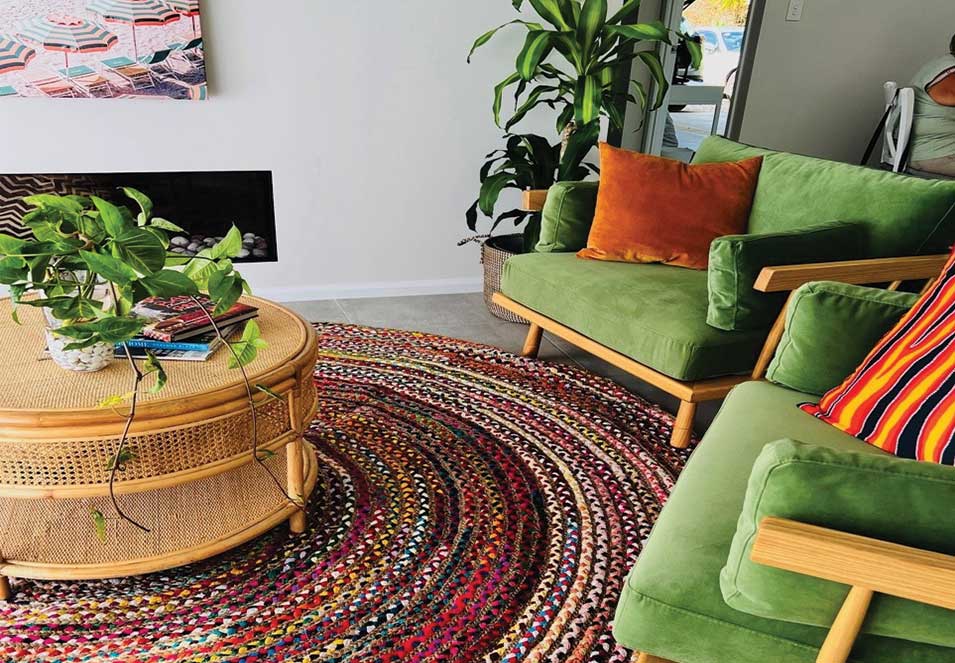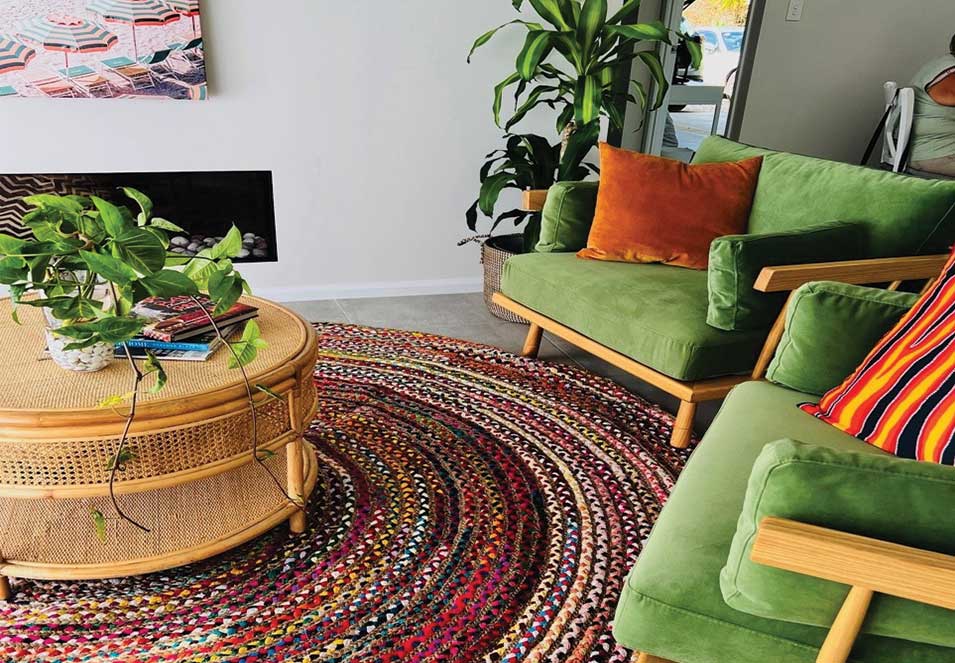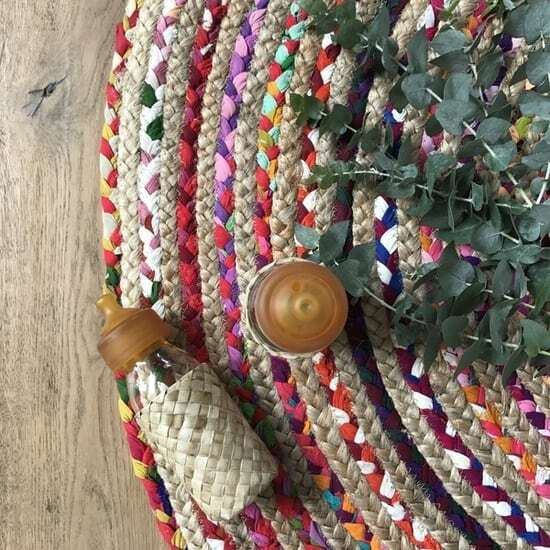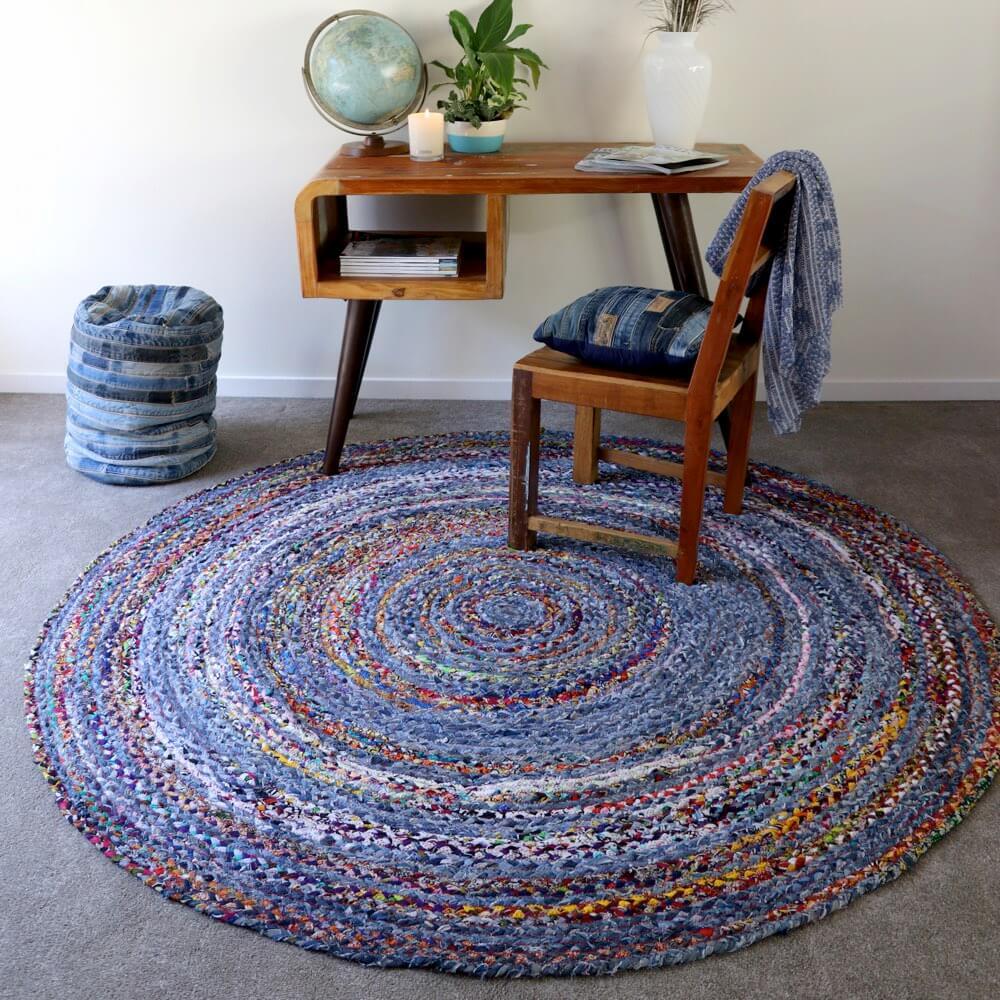5 February 2018
What is Jute? The Ultimate Guide

Search Results:
Search Results:
5 February 2018

Designers and consumers around the world have favoured jute rugs for centuries.
Cherished for their rustic, earthy style, the look a jute rug can evoke is timeless and strikingly chic when pitched against most modern interiors - industrial, beachy Hamptons, barn house or pared back Scandinavian.
The innate, organic nature of a jute rug makes it a wise choice for anyone looking to bring both style and functionality to a space without further burdening our precious environment with the toxic load that comes from conventional carpets and floor coverings. And they’re budget friendly too!
Jute is a long, shiny vegetable fibre - mostly grown in tropical countries like India and Bangladesh – that can be spun into coarse, strong threads.

Easy to produce, sturdy, and biodegradable, these threads are the perfect material to use in handmade jute rugs, shopping bags, rope, and the sacks that are often used for carrying fresh produce and grains. Being hard wearing, jute is also used to make outdoor cushions, curtains and laundry baskets….but it's jute rugs that we're big fans of.
Jue is the second most versatile fabric after cotton, and the second most common fibre grown and used across the world. It uses much less water to produce than cotton plus very little to no fertilisers and pesticides, making it one of the most eco friendly crops known to man. It’s no wonder that jute rugs are rapidly gaining popularity here and overseas!
Most jute comes from the bark of the white Jute plant, or Corchorus capsularis. Jute harvests take place once a year, after a growing season of four months (approximately 120 days).
Being golden-hued, it's sometimes called the Golden Fibre. It's light, has a shimmery sheen to it, and has a flexibility and bounce unlike other fibres.
Jute grows best in tropical zones with mid-to-high humidity, in countries that include India and Bangladesh, Nepal and Myanmar. Jute is also processed in Pakistan using a substantial amount of imported raw jute from Bangladesh.
Interesting fact: 90% of the world's jute comes from Bangladesh.
To help keep the soils healthy and vibrant, jute farmers rotate their crops so each harvest remains strong and full of life. This helps to make jute the ideal fibre for rug making... and one of the reasons why jute rugs are well suited for walking and sitting on!
The strong knobbly knots that are found in many jute rugs are soothing underfoot while the fibres’ innate, organic qualities give it both cushioning and insulating properties. Ideal for use on hard wooden, tile or concrete floors, a jute rug can withstand years of high foot traffic and heavy wear from kids and pets alike.
Jute fibres range in length from one to four metres. Jute stems are cut, then bundled together in packs before being soaked in water to separate and loosen the fibres. This is called biological retting. Once this is done, the outer non-fibrous matter is scraped off, and the softened fibres pulled straight out from inside the jute stem.
It's a time-consuming process but occurs without polluting the earth with toxic chemicals.
This retting process can also be done chemically to strip the fibres from the stem, but it's much more expensive, which is good news for us. Most producers find it's just as easy to employ the natural method using water, and so they do.
These fibres are then processed into threads, which are then woven together to make jute fabrics and ropes, used in the production of jute rugs and many other household and commercial items.

Jute fibre is 100% biodegradable and recyclable, and does not create toxic gas when burned. This means your jute rug can also go straight into the compost once its time is up and is ideal for use as weed matting in the garden.
We decided to look for makers of recycled cotton rugs and not long afterwards, discovered a place where many of the townsfolk were involved in the production of recycled cotton, rainbow-coloured chindi rugs. We loved them instantly and couldn't wait to bring them on board.
They ticked all of our "ethics" boxes:
And better yet, we could combine chindi rope with jute to make a stunning jute rug that utilised both! Click here to see our lovely range of Chindi Jute rugs

Our chindi jute rugs are incredibly versatile and can be utilised in almost any room or space to bring in a bright pop of colour and a fun, laid back vibe. And knowing how to style a jute rug properly will ensure that you get maxium decor mileage out of your new piece....guaranteeing more bang for your buck!
Hallway Runner
Always allow enough space between the edges of the runner and the hallway walls. We'd recommend at least 10cm so that the rug doesn't overwhelm the space. If the floor underneath is smooth - wood, concrete, tile - we'd also suggest using a rubber underlay to prevent the jute rug from moving when walked across.
Under Bed Rugs
Depending on your bed and room size, you can use either a jute runner rug at the foot of the bed or one of our round jute rugs placed under the end of the bed. Just ensure that the rug is properly centred underneath or beside the bed.
Under Dining and Coffee Tables
It's usually recommended that you choose a jute rug that's the same shape as the table. So round table on round rug, rectangular table on rectangular rug.
Also ensure that the legs of any dining chairs will also sit on a jute rug placed under a dining table, keeping in mind that chairs will be pulled out for seating. As a guide, a rug that is 50cm longer and wider than your table would normally suffice.

Colours and Patterns
A colourful jute rug can become the focal point in any space around which the other items will visually support this dominant feature. Likewise a more subdued jute rug can become a supporting feature in a space, allowing another item to pop and take centre stage.
Being a natural fibre, there will be some shedding of your jute rug which is easily swept or vacuumed up. The amount of shedding will depend upon the quality and tightness of the weave.
You can also take your jute floor rug outdoors to give it a good shake or beating - the latter might sound a bit brutal but it's actually quite good fun :). This will also help to dislodge any pet hair.
We'd recommend vacuuming your jute rug at least weekly, lifting it to clean underneath.
If you have a liquid spill, be sure to blot it with a clean rag or paper towel asap to avoid staining. The washing of a jute rug needs to be done carefully - be sure not to douse it with too much water, don't rub or brush vigorously (dab only) and spot clean without the use of harsh chemicals.
In the case of your jute rug getting really wet, try to dry it immediately either in the sun or with a hair dryer to mitigate discolouration.
In times when the focus on our environment is becoming increasingly important, more and more consumers are opting for eco friendly homewares and personal items....for good reason. A jute rug is an easy way to bring an environmentally conscious and non-toxic item into your home, classroom or office space.
Stylish, sturdy and super practical, you'll get to enjoy the health and design benefits of your new jute floor rug for years to come. And being versatile with a range of colours and sizes to choose from, you need look no further than Recycled Mats for decking out your home or work space.
We offer both Zippay and Afterpay so you can secure your jute rug now and pay later.